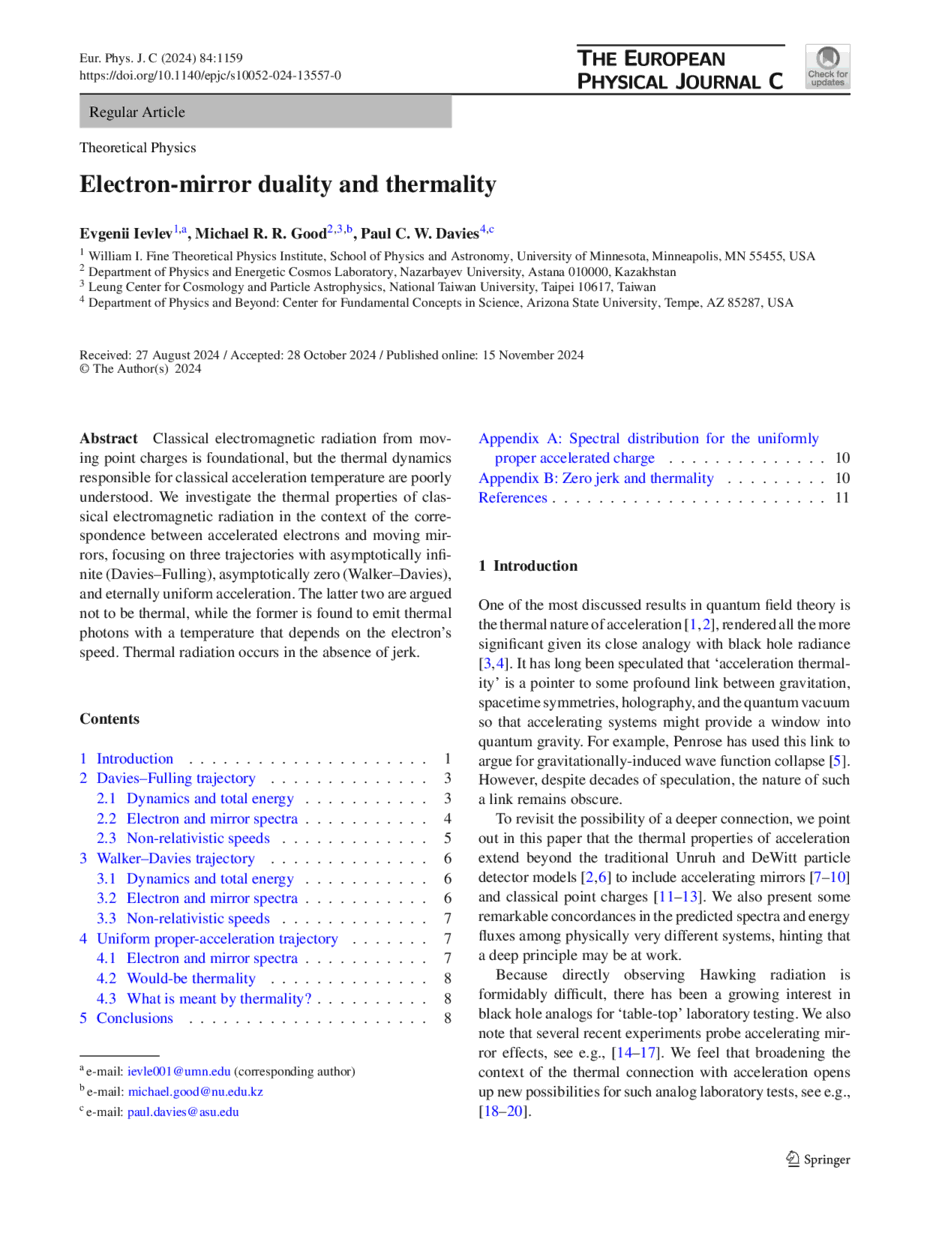https://doi.org/10.1140/epjc/s10052-024-13557-0
Regular Article
Electron-mirror duality and thermality
1
William I. Fine Theoretical Physics Institute, School of Physics and Astronomy, University of Minnesota, 55455, Minneapolis, MN, USA
2
Department of Physics and Energetic Cosmos Laboratory, Nazarbayev University, 010000, Astana, Kazakhstan
3
Leung Center for Cosmology and Particle Astrophysics, National Taiwan University, 10617, Taipei, Taiwan
4
Department of Physics and Beyond: Center for Fundamental Concepts in Science, Arizona State University, 85287, Tempe, AZ, USA
Received:
27
August
2024
Accepted:
28
October
2024
Published online:
15
November
2024
Classical electromagnetic radiation from moving point charges is foundational, but the thermal dynamics responsible for classical acceleration temperature are poorly understood. We investigate the thermal properties of classical electromagnetic radiation in the context of the correspondence between accelerated electrons and moving mirrors, focusing on three trajectories with asymptotically infinite (Davies–Fulling), asymptotically zero (Walker–Davies), and eternally uniform acceleration. The latter two are argued not to be thermal, while the former is found to emit thermal photons with a temperature that depends on the electron’s speed. Thermal radiation occurs in the absence of jerk.
© The Author(s) 2024
 Open Access This article is licensed under a Creative Commons Attribution 4.0 International License, which permits use, sharing, adaptation, distribution and reproduction in any medium or format, as long as you give appropriate credit to the original author(s) and the source, provide a link to the Creative Commons licence, and indicate if changes were made. The images or other third party material in this article are included in the article’s Creative Commons licence, unless indicated otherwise in a credit line to the material. If material is not included in the article’s Creative Commons licence and your intended use is not permitted by statutory regulation or exceeds the permitted use, you will need to obtain permission directly from the copyright holder. To view a copy of this licence, visit http://creativecommons.org/licenses/by/4.0/.
Open Access This article is licensed under a Creative Commons Attribution 4.0 International License, which permits use, sharing, adaptation, distribution and reproduction in any medium or format, as long as you give appropriate credit to the original author(s) and the source, provide a link to the Creative Commons licence, and indicate if changes were made. The images or other third party material in this article are included in the article’s Creative Commons licence, unless indicated otherwise in a credit line to the material. If material is not included in the article’s Creative Commons licence and your intended use is not permitted by statutory regulation or exceeds the permitted use, you will need to obtain permission directly from the copyright holder. To view a copy of this licence, visit http://creativecommons.org/licenses/by/4.0/.
Funded by SCOAP3.





